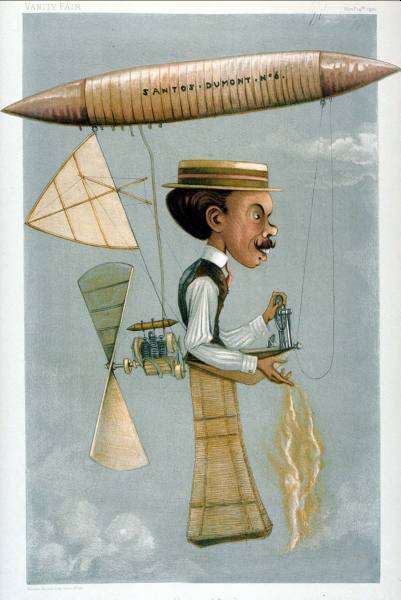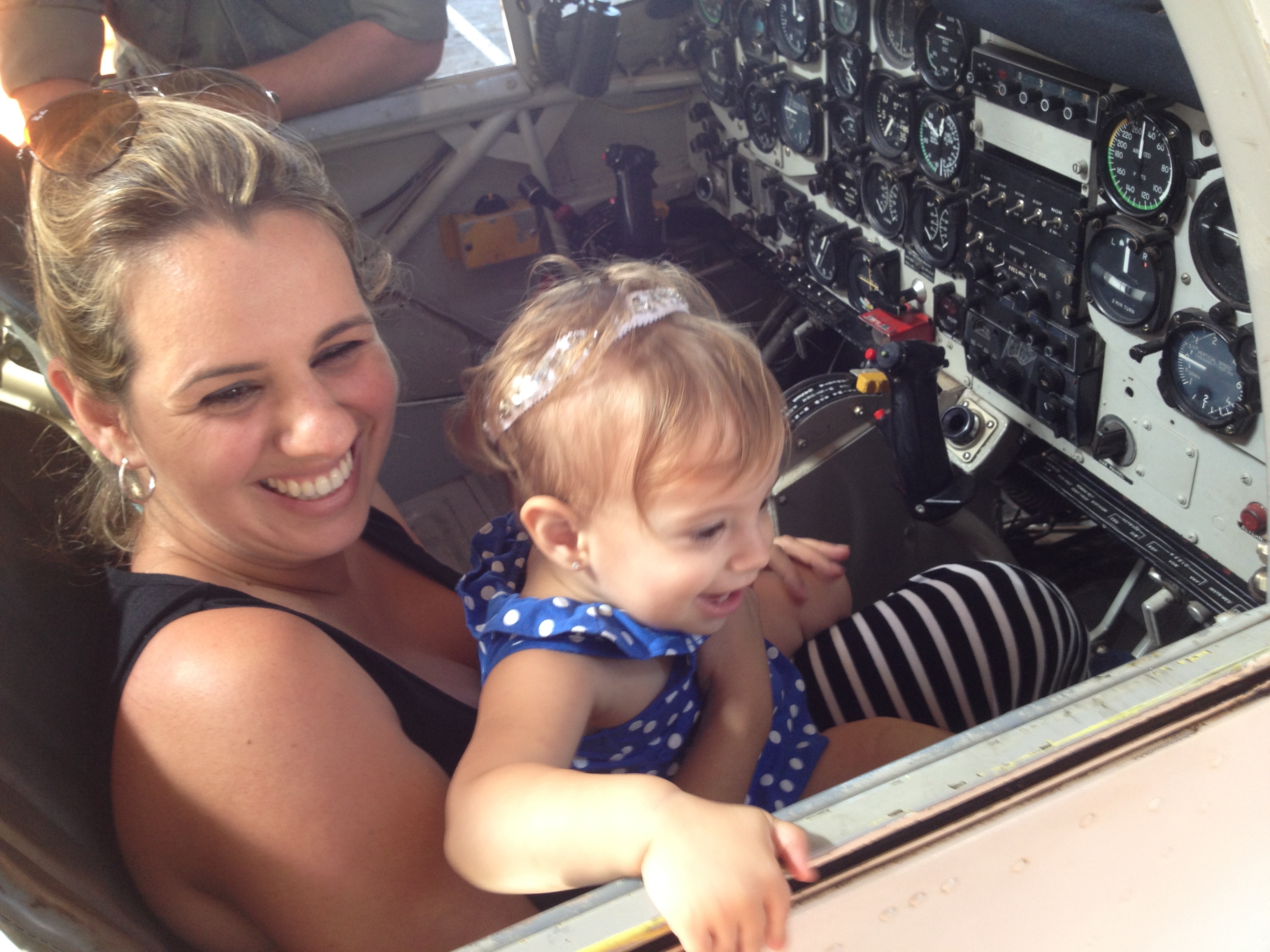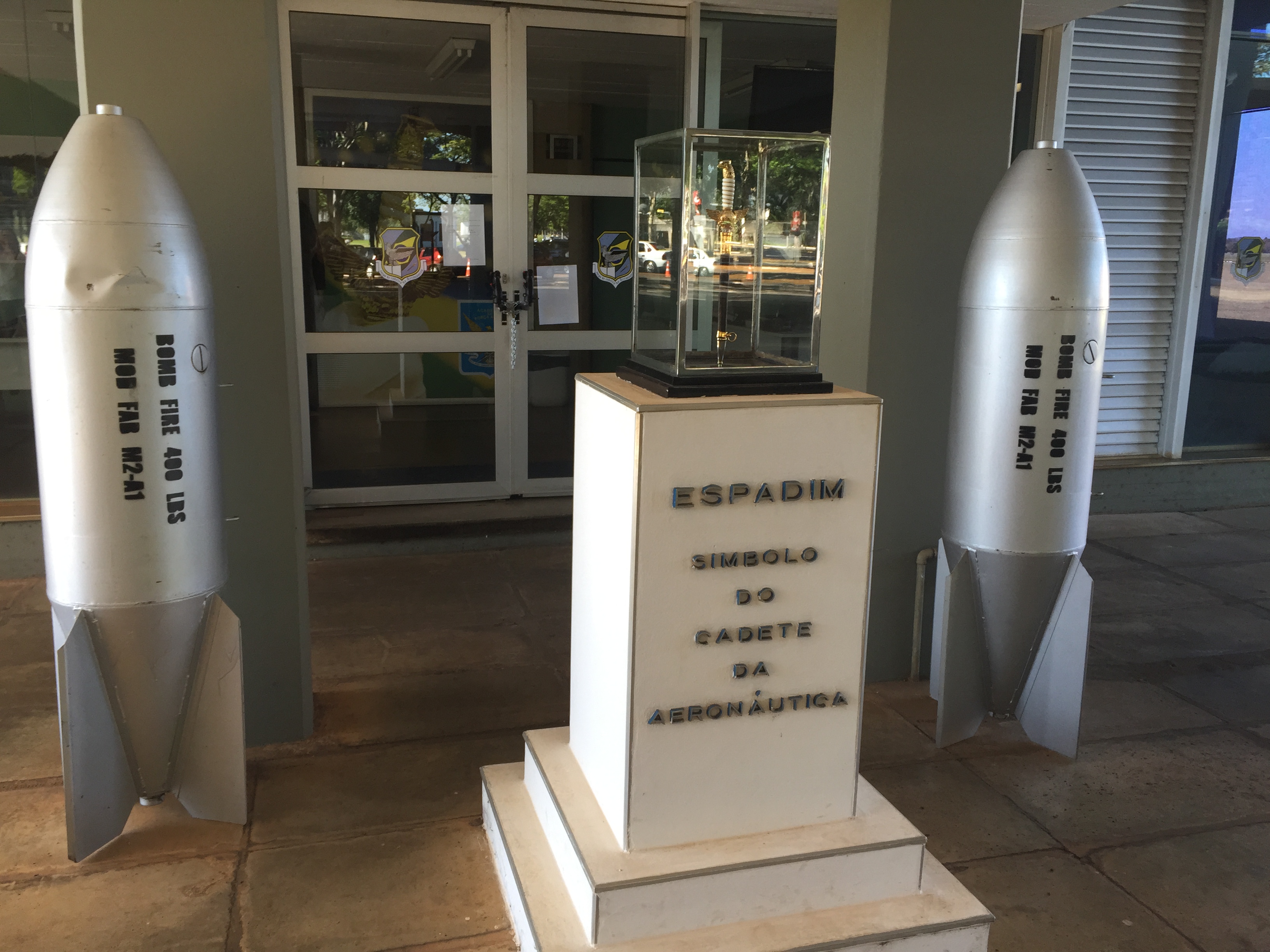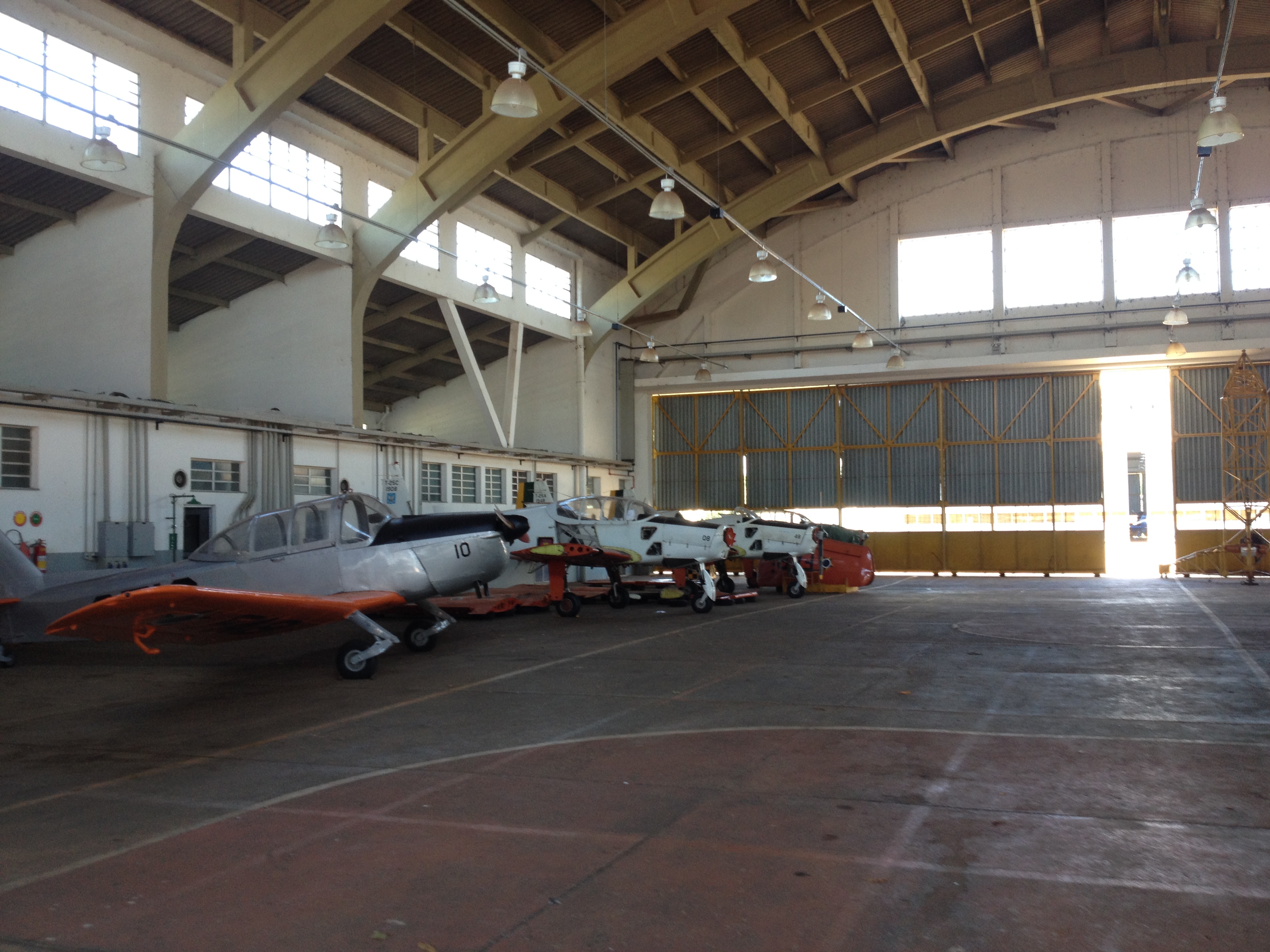Academia da Força Aérea
We visited the Brazilian Airforce Academy, which is known here as Academia da Força Aérea, with a Brazilian Air Force veteran. He was involved in an explosion about 35 years ago that left him badly burned on his lower body. The burns and injuries were so severe, that he spent a full year in the hospital before he was able to go home. As a part of his injury and medical discharge, he was promoted and deemed to be of a hero status. Even though he's been out of the Air Force for over 35 years, younger generations at the base clearly knew who he was as they walked by they'd stop by, salute and say a few words. He is a very nice, laid back, and very respected guy.
By the way, he won’t talk about the accident, his rank, or anything else. Jenifer’s father has known him for 30+ years, and even he doesn’t know the answers to these questions.
A Different Father of Flight
A guy I had never heard of named Alberto Santos-Dumont is considered the father of aviation in Brazil. From what I can tell, his first heavier-than-air flight was in 1906 (Wright brothers flew in 1903). In doing some research, it looks like he gained most of his fame in 1901 when he rounded the Eiffel Tower in a balloon and won the Deutsch de la Meurthe prize. This showed that controlled flight was possible. Even before his 1901 event in Paris, he was a popular fixture in his work with balloons and dirigibles. Vanity Fair even had a caricature of him in an 1899 edition of their magazine:

Of course, since we're in Brazil, his bust is featured in many places, including by the academy barracks:

From what I've read and been told, he did a lot of things that took existing technologies and made them more widely used or popular. One story Brazilians tell me about with him is how he changed how people told time from using pocket watches to using wrist watches. Even though he didn't invent the wrist watch, he showed it's practical use for keeping track of time while tackling his aviation endeavors.
The Academy
Entry took a little while, even with our guide, largely because of my American passport. We had to spend a few minutes at the check points on the way in to gain and verify clearance. It wasn't a huge deal, I never had to get out of the car or even talk to anyone. They just ran my passport, came back, and we continued our journey inward.
Once you get past the check points and you get into the base, you get to see a bunch of retired equipment. I don't know why, but seeing old tanks and helicopters is always cool, no matter how many times you see them.
This facility is frequently visited by Brazilian presidents, and it is considered the flagship base within the country. Since we went over the Christmas/New Years break, a lot of people were still on vacation, and some of the areas were still closed. Ironically, defense spending is very low in Brazil, however the presidents always complains that roads within the bases are crappy and that many of the planes aren't ready to fly. Since they don't have the money to repave roads, or buy new parts for the planes, they let the roads deteriorate and scrap old planes for parts when they can. This is so they can keep their higher priority items attended to.
We spent most of our time in the area where cadets live and learn how to fly. We did not go to the part of the base where actual fighter jets are located, so don't expect to see any live weapons, just aircraft used for training, as well as some old combat aircraft that are being restored for various museums.
They have some pretty cool artwork around the campus. Here's a piece where they mounted an actual prop on the wall, and painted a plane behind it:
They had a few older engine designs sitting around as well. The man in the striped blue shirt was our guide for our day. He also smoked on campus, which is strictly prohibited. But hey, he's a hero there, so they'd probably ask him to make sure no one else sees and put it out.
I've never been inside any military academy before. The closest I've been is by driving by the US Air Force Academy in Colorado, so I'm not sure how academies celebrate graduates. Here, they celebrate graduating cadets with large plaques that are mounted on the pilars of the walkways that list out all graduating members of a class, as well as the commanding officers. There are cases where cadets do die during training. Fortunately, those cases appear to be rare, since only a few of the plaques include "In Memorian" where they honorarily graduate the fallen cadet. This plaque, for example, has two who died during training:

Being this is the Air Force, they also include some of the planes, missiles, and bombs that they've used in the past for display purposes. Here are a few examples:

Being this is the military, there are lines and instructions everywhere, even on the hangar, you'd see painted hand prints that clearly show where to push when closing the doors:

Once in the first hangar, we received a walk through of how cadets train from an active duty officer. Jenifer was translating in close to real time, so I'm doing my best in recalling the process for a new cadet, but here we go:
- 1st year: Classroom Training/Flight Theory
- 2nd year: Simulators
- 3rd year: Gliders
- 4th year: Prop Planes
They don't even get into jets until sometime after the forth year. Just to re-iterate, we didn't go into the part of the base with the jets. That would have been cool, though!
The officer also broke down the maintenance schedules for the training planes. The schedules, as you can imagine, are quite rigorous. They completely disassemble the plane every couple hundred hours and rebuilt it, replacing any faulty or broken parts. Here's a plane that was getting serviced when we walked in:

These training planes have two seats, one for the instructor, and one for the cadet. All controls in the plane are on both sides of the cockpit and mechanically linked, so if the cadet turns the plane to the right, or adjusts the prop, the controls on the instructor side will both reflect those changes at the same time. These planes are almost 100% mechanical, there are very few things outside of the radio that rely much on electronics. Here's the left side of one of the cockpits:
The good news for me, is all dials included both Portugues and English, so it made it very easy for me to figure out what everything was. I should have taken a video to show how all of the controls were mechanically linked, but I didn't think about it at the time. Here's a picture of Jenifer and Zoey in the right seat of the cockpit:

Regarding maintenance, when planes are rebuilt, there are times where they don't have all the parts, so they move those planes to another hangar and hold onto them until another plane comes down that they'll then rip apart to try to fix another plane. The two planes you see at the back of this picture have both been down for over a year, so they only have nine active training prop planes. They normally have 10, so being down a plane, means that the other planes are used about 10% more, meaning that the required maintenance on those planes happens more frequently and it makes it tougher for them to train new pilots.
Since we started with prop planes, and year four, we'll go backwards through the cadet's career. In year three, they start flying with gliders. The glider is hooked to a tow plane, and when they are at the right altitude, the pilot of the glider pulls a lever to release it from the tow plane and they are off. Here's one of the three tow planes we saw:
The officer also said that the guys who stay on base over the weekends take the gliders up to have fun on Saturday mornings. They'll go up from about 7am to noon. Here are some of the gliders:
The officer decided while walking us through the cockpit of a glider, that Zoey should get a closer look:
She was not happy when we took her out, and tried to climb back in until he finally closed the cockpit.
Finally, they did have some very old fighters that they are preparing to go to museums. Here is one that is almost ready to be shipped:
They do have a museum on campus, but it's closed until February, so we were lucky enough to get the "insider's tour," which is really the tour you want!














